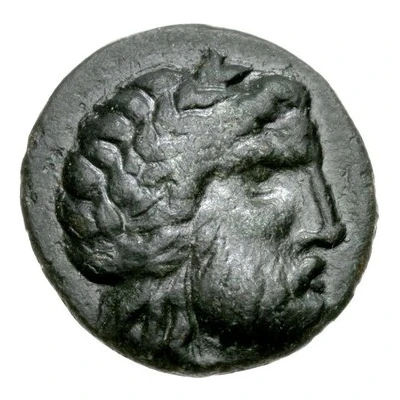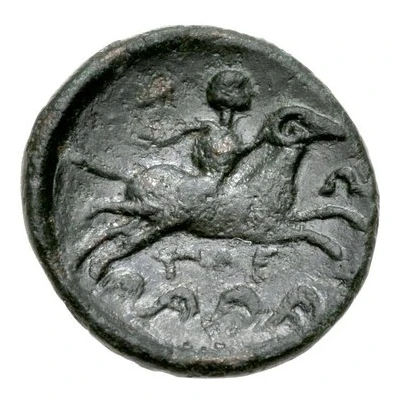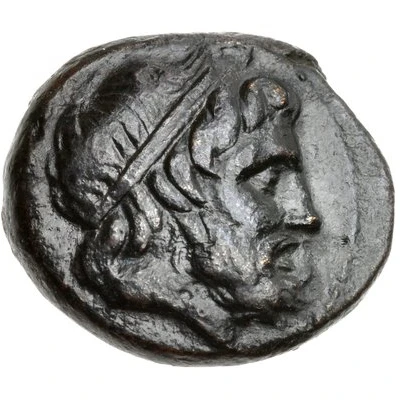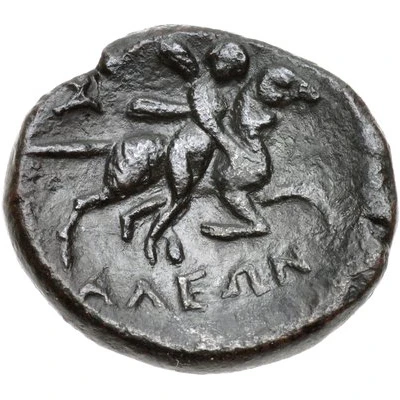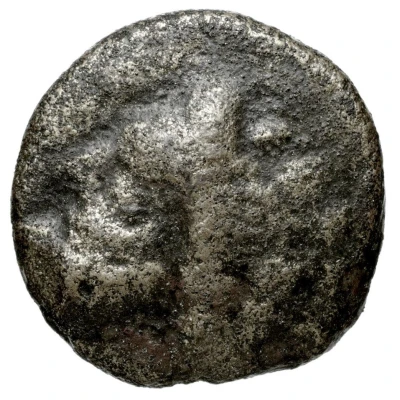
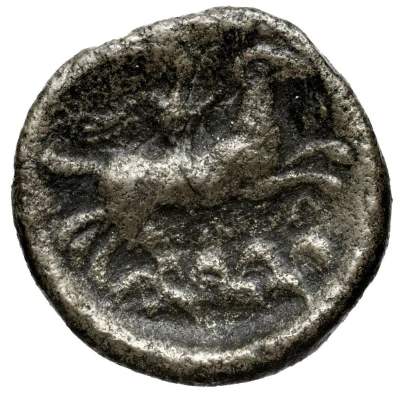

© Bibliothèque nationale de France
Chalkon 302 BC - 265 BC
| Bronze | 1.8 g | 14 mm |
| Issuer | Halos (Thessaly) |
|---|---|
| Type | Standard circulation coin |
| Years | 302 BC - 265 BC |
| Value | Chalkon (1⁄48) |
| Currency | Drachm |
| Composition | Bronze |
| Weight | 1.8 g |
| Diameter | 14 mm |
| Shape | Round (irregular) |
| Technique | Hammered |
| Demonetized | Yes |
| Updated | 2024-10-10 |
| Numista | N#65230 |
|---|---|
| Rarity index | 94% |
Reverse
Phrixos, naked but for cloak billowing out behind him like wings, riding ram to right, holding onto its head; below, four curly compositions depicting the sea; ΑΛΕ below, Ω to right, И above left.
Script: Greek
Lettering: ΑΛΕΩΝ
Edge
Rough
Interesting fact
The Chalkon coin was used as a form of currency in the ancient Greek city-state of Halos in Thessaly during the 4th century BC. Despite being made of bronze, which was a common material for coins at the time, the Chalkon coin was relatively lightweight, weighing only 1.8 grams. This makes it one of the lightest coins ever produced in ancient Greece.
